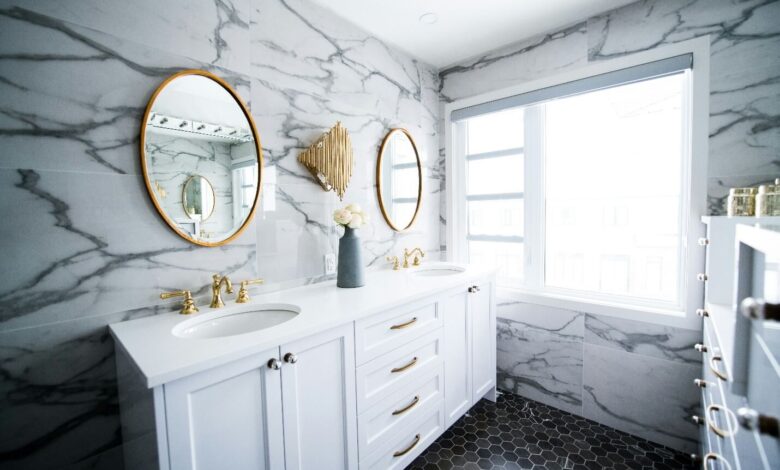Navigating the Challenges of Bathroom Renovations

Bathroom renovations can transform a mundane or dysfunctional space into a sanctuary of comfort and style. In Seattle, where the architectural charm meets modern efficiency, remodeling your bathroom involves more than just aesthetic upgrades—it requires careful consideration of local building codes, budgeting, and the selection of appropriate materials. Whether you’re looking to update a historic home in Capitol Hill or modernize a condo in Belltown, the complexities of these projects demand detailed planning and professional expertise.
Setting a Realistic Budget
One of the most challening aspects of bathroom renovations is budgeting. Costs can escalate quickly, with expenses ranging from high-end fixtures to unforeseen structural repairs. To avoid financial strain, it’s crucial to set a realistic budget that includes not only the visible components like tiles and taps but also behind-the-scenes essentials like plumbing and waterproofing.
Start by obtaining quotes from several contractors to get a ballpark figure for the work needed. Factor in a contingency of at least 15-20% on top of this estimate to cover unexpected issues that often arise during renovations, such as outdated wiring or hidden water damage. For Seattle homeowners, local grants and incentives may be available for energy-efficient upgrades or improvements that enhance water conservation, which can help mitigate some of the costs.
Understanding Local Regulations and Hiring Professionals
Before diving into a bathroom renovation, Seattle homeowners must navigate the city’s specific building regulations. These rules can influence decisions from plumbing schematics to electrical wiring layouts, each requiring compliance to ensure safety and functionality. Missteps here not only risk delays but could lead to significant financial penalties. This is where the expertise of a professional becomes invaluable. Hiring a Seattle bathroom remodeler with a solid understanding of local codes and experience in handling such projects can save homeowners a substantial amount of time and money. These professionals ensure that every aspect of the renovation meets legal standards and is executed smoothly.
Working with a local remodeler also means tapping into a network of suppliers and contractors who understand the regional nuances, such as the need for mold-resistant materials due to Seattle’s damp climate. A skilled remodeler can help streamline the process, from securing permits to the final inspection, ensuring that each step aligns with municipal requirements and your personal vision.
Choosing the Right Materials and Design
Selecting materials for your bathroom involves not only aesthetics but also functionality. Materials like porcelain tile or engineered wood can withstand high humidity and are suitable for such environments. When choosing fixtures, consider options that are known for their durability and water efficiency, which are crucial in maintaining the bathroom’s performance over time.
The design of the bathroom should reflect both the architectural style of your home and your personal taste, creating a cohesive look throughout the property. For example, a craftsman-style home could be enhanced with natural stone tiles and classic fixtures that echo its historic character, while a more contemporary space might benefit from sleek, modern designs and smart technology integration like touchless faucets or ambient lighting systems.
Planning for Plumbing and Electrical Work
Plumbing and electrical systems are the lifelines of any bathroom, and their complexity can significantly impact the renovation process. The existing plumbing and electrical infrastructure may need major updates to meet current standards and accommodate new fixtures.
It’s vital to conduct a thorough evaluation of the existing systems with a certified plumber and electrician early in the planning process. This step can identify potential issues such as old piping that needs replacement or insufficient wiring that could pose safety hazards. Addressing these issues early can prevent costly mid-project modifications that disrupt the timeline and budget.
Read also Here’s How Solar Solutions Can Enhance Your Home Improvement Projects
Considering Seattle’s climate, proper ventilation becomes a necessity, not a luxury. Bathrooms in this region are prone to mold and mildew due to the high moisture levels. Installing adequate ventilation systems, such as high-quality exhaust fans, will help mitigate these issues and protect the longevity of the renovation. Effective planning in this phase ensures the functionality and safety of the bathroom, aligning with both the homeowner’s needs and local building codes.
Managing the Renovation Timeline
Bathroom renovations can be disruptive, especially in a family home where the need for functional bathroom space is daily. Managing the timeline effectively is, therefore, critical to minimize inconvenience and ensure that the project progresses smoothly. Clear communication with your contractor about the timeline and what it entails can help set realistic expectations and reduce stress for all parties involved.
Start by creating a detailed schedule that outlines each phase of the work, from demolition to the final touches. This schedule should include buffer times for unexpected delays, which are common in renovation projects. Factors like late material deliveries, unexpected structural challenges, or extended time needed for installations can all push back the timeline. Having a buffer ensures that these surprises don’t cause a complete derailment of the project.
Involving a professional with a solid track record of completing projects on time can be a significant advantage. Experienced contractors have the foresight to anticipate common pitfalls and the expertise to handle them efficiently. They also often have established relationships with suppliers and can ensure that materials arrive as planned, which is crucial for keeping the project on schedule.
Homeowners should also plan for temporary adjustments while the bathroom is under renovation. Setting up a temporary bathroom space with essential facilities in another part of the house can help maintain daily routines and lessen the impact of the ongoing work.
Conclusion
Navigating the complexities of a bathroom renovation requires careful planning, a realistic budget, and professional expertise. From understanding local regulations and selecting the right materials to managing intricate plumbing and electrical work, each step comes with its challenges but also opportunities to enhance the home’s value and functionality.
With the right approach, these renovations can go beyond merely updating a space, transforming it into a more efficient, stylish, and comfortable environment. Engaging a skilled contractor ensures that the project not only meets current standards but also anticipates future needs, providing a timeless upgrade to any home.
By adhering to these strategies, homeowners can achieve a seamless renovation experience, resulting in a bathroom that will serve the household well for many years to come. This careful preparation and execution reflect the investment’s worth, both in terms of resources and the daily enjoyment it brings.




